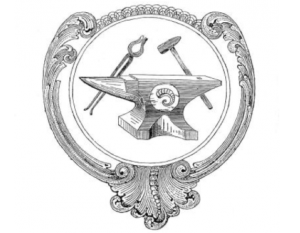Fireplace Tool Retrospective
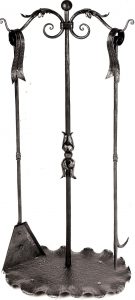
Today I will show you a retrospective of some of the fireplace tool sets that I have made over the last thirty years.
The ribbon-handled set above incorporates repoussé acanthus leaves, and a double calyx. They were made for a home that has wall murals of vines and floral elements.
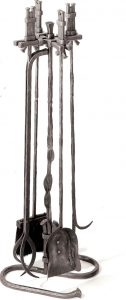
Above, we see a set that has a clay-like feel to it, with a somewhat free-form center shaft. The metal was sanded to bring out highlights of the texture.
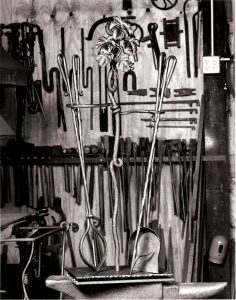
The grapevine tool set had a bark-like texture applied. The vinelike aspects provide visual suppleness.
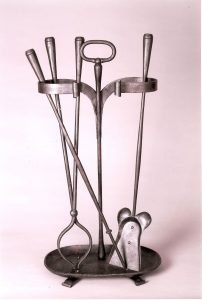
The above set was inspired by an early 20th century design. The forge welded arms that contain the tools was a bit of a trick. It involved folding the material back upon itself at an angle, then drawing it down to a size that could be forge welded gracefully to the center shaft.
Forge welding is the age-old way the blacksmith attaches two or more pieces of iron together by heating the parts to a “welding heat”, or about 2700 degrees. The parts are then pounded together in a very controlled manner. The process of forge welding involves no electricity.
All of these sets had some forge welded elements in them, specifically the tips of the pokers.
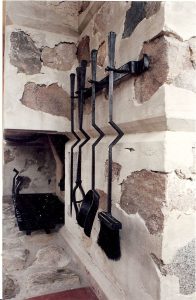
This last set was one of my first commissions, before I was a full-time smith, back in 1991. The set was designed for a Prairie Style home in Racine, WI. When I met with the client to discuss the deign, I jokingly mentioned that I could make the shafts mimic the 90 degree angle in the wall. We all laughed, but when we composed ourselves, we decided, “Why not?” The result was this set, which truly depicts a design made specifically for this home.
Note that the right angles in the shafts were all forged out of one bar. They were not pieced togther, as one might believe if not experienced in the process. This process involves precise control of the hammer in order to achieve a crisp corner, and the desired dimensions.
Though the below images are not firetools, these screens were recently made for another Prairie Style home in Lake Geneva, WI. The architect based the entire home on 30 and 60 degree angles, reflected also in these fire screens, which he also designed.
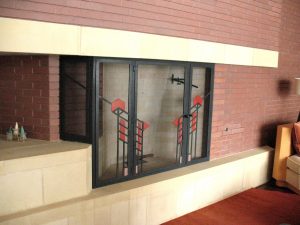
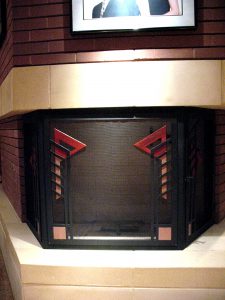
The screen at the top was very large, at 47″ high. The bottom screen was 27″ high. 1200 degree black paint was applied, and Gilders Paste added the color. The paste holds up well to the heat of the fire.
……..Dan Nauman
“How you spend your time is the only true measurement of your priorities in life.” …………Nancy Hunter Denney, Author.
